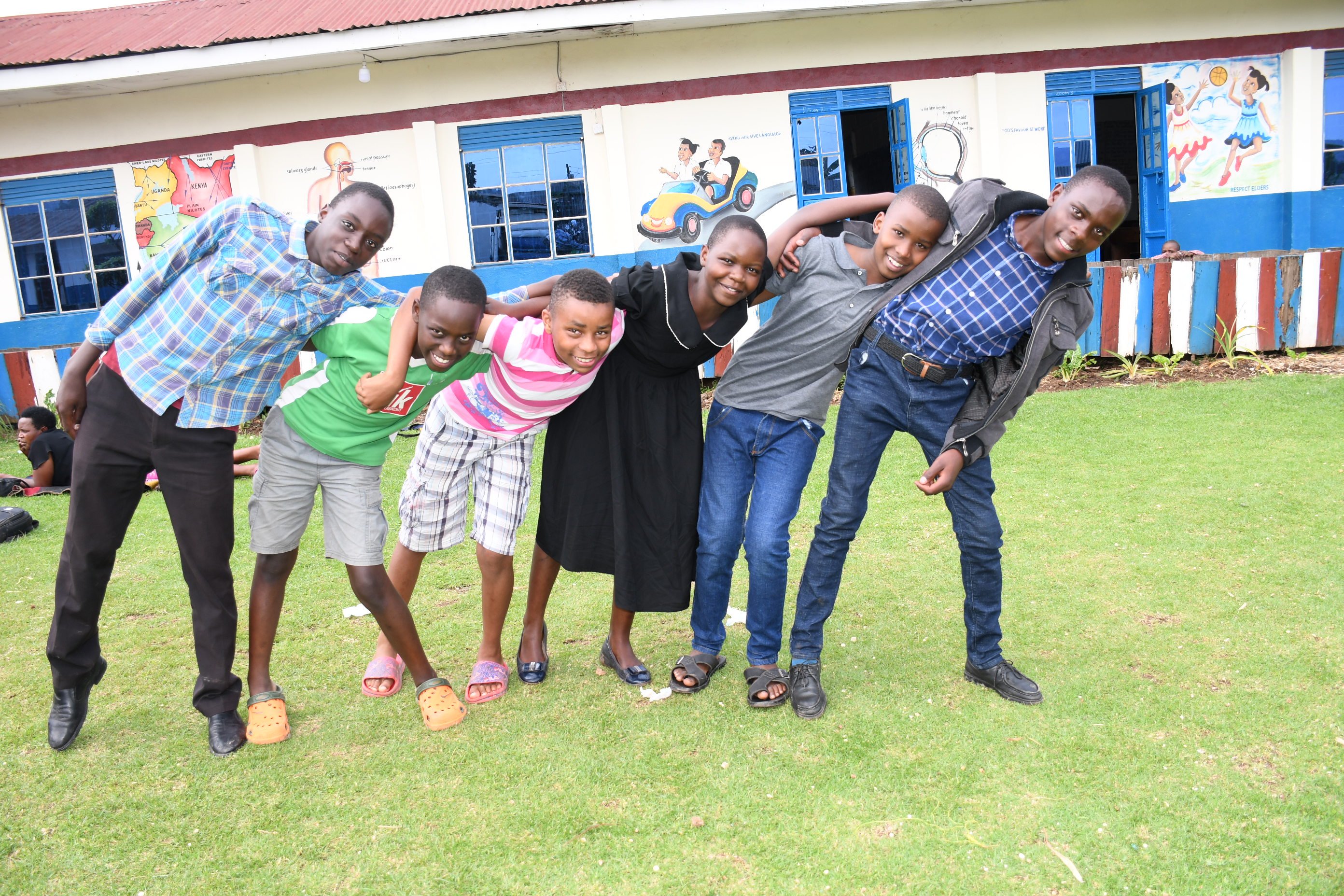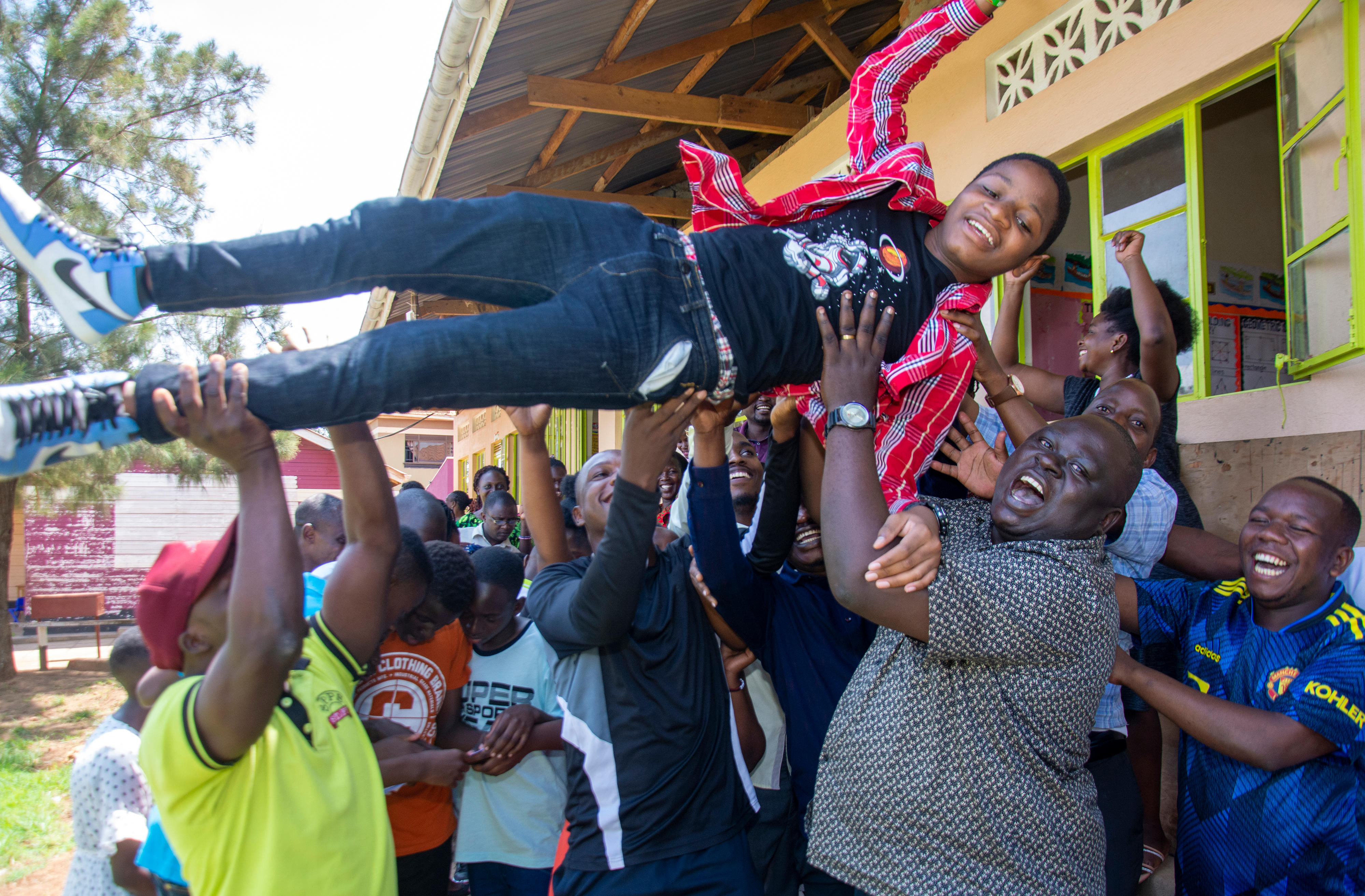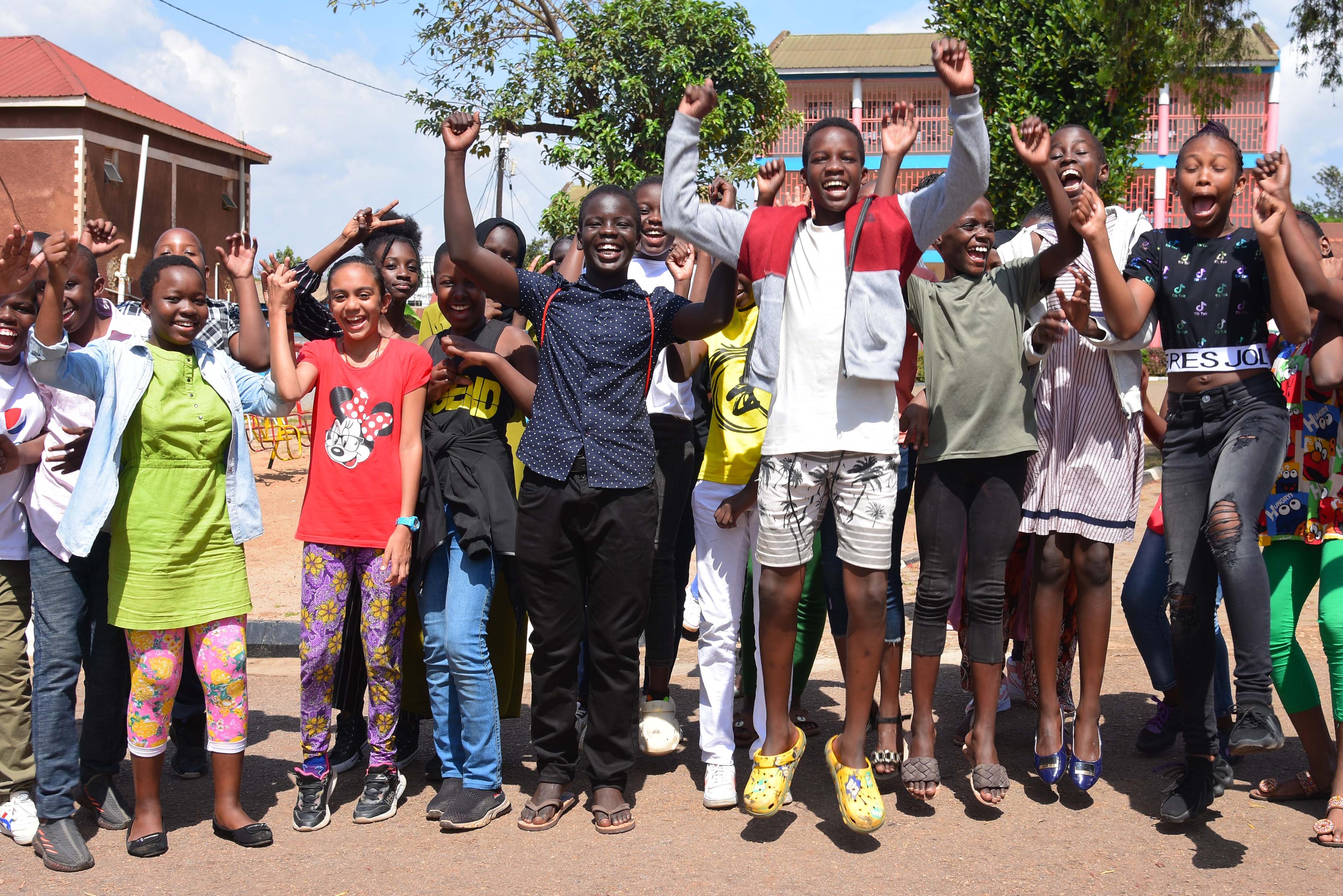Prime
What the future holds for primary dropouts

Left to right: Henry Ahumuza who scored Aggregate 7, Albert Ainembabazi 7, Smith Agaba Kanoti 7, Esther Ninsiima 6, Dreckson Niwaha 6, and Victor Byonanebye 5 all former pupils of Kabale Universal Primary School in Kabale District celebrate after getting their results. PHOTO/COURTESY
What you need to know:
- A section of experts believe some of the dropouts are ghosts made up by school administrators to get more funds from the government.
Education experts are scratching their heads on what the future holds for more than one million learners who were unable to complete the seven-year primary education cycle.
The Uganda National Examinations Board (Uneb) released the 2022 Primary Leaving Examinations (PLE) results last Friday.
However, data from the Ministry of Education shows that of the 1,880,000 learners who joined Primary One in 2016, only 832,659 completed Primary Seven. This means that 1,047,341 learners dropped out along the way.
It is not clear whether these learners are still in the system, moved out of the country or died. The Auditor General has previously identified poor or absence of quarterly inspection reports as a handicap to quality education in the country, and maintained that this glitch has denied districts and schools an opportunity to solve the challenges faced in the implementation of the Universal Primary Education (UPE) programme such as the dropout crisis.
Data from Uneb shows that of the 832,659 learners who registered for PLE last year, 811,810 sat for the exams. Some 714,702 candidates passed the exams and qualify to join secondary schools, but 97,000 of their colleagues failed and were advised to repeat.
Where are the missing learners?
Dr Yusuf Nsubuga, a veteran educationist and former director of basic education in the Ministry of Education, says school dropout is becoming a global phenomenon.
“In 2015, over five million learners in some provinces in China dropped out of school and the reason the researchers gave is that the learners failed to embrace the methodology of teaching. This could be the same problem here. Teaching and assessment is changing, but both learners and teachers are still stuck with our traditional system,” he says.
He also blames the problem on other contributing factors including early marriages and teenage pregnancies, and hidden costs such as parents failing to pay fees.
“It is common knowledge that costs such as school meals, scholastic materials and uniforms are keeping many pupils away, especially in rural schools. Teachers’ absenteeism is also to blame for this. Teaching is not taking place in many public schools save for a few which have strong supervision and monitoring,” Dr Nsubuga says.
To tackle the problem, Ms Florence Kabubiri, the head teacher of St Nicholas Primary School Mannya in Rakai District, says the government must strengthen supervision and monitoring in schools.
“By using the schools where the children are enrolled, the government can get a report on an annual basis on who dropped out of school and why. This will help to follow up and maintain the numbers in schools from the time of joining Primary One up to the highest level,” she says.
Dr Fredrick Ssempala, an education expert and senior lecturer at Kabale University, says the “missing learners” are likely to be “ghosts”, a recurrent problem that has dogged the education sector in the past two decades.” “Chances are high that the original enrollment was inflated by head teachers so that they get more capitation grants considering the fact that the government gives very little funds (less than Shs10,000 per child per term,” he says
Is repeating a better option?
Although Uneb advises failed candidates to repeat Primary Seven, Dr Ssempala says it is better for the learners to join vocational training institutions “because even if they repeat, they may fail because their failure is caused by reasons beyond their control”.
“Success in life depends on the ability to solve society’s problems, but not paper qualifications. For example, Bill Gates and Mark Zuckerberg are Harvard University dropouts, but have changed the world,” he says.
Ms Kabubiri says the government must initiate vocational programmes where those who fail Primary Seven can join and acquire skills which will help them get employed in future.
Uganda has consistently been ranked among countries with the lowest proportion of learners who complete primary school, less than 30 percent of pupils completing the level.
Previously, an analysis of the completion rate in Primary Seven as reported by the Ministry of Education revealed a performance rate of below 50 percent in 2006, 2007, and 2008.
In the academic years 2009 and 2010, the completion rate was 52 percent and 54 percent respectively.
“27 percent of Ugandan children are not in school at any given moment despite free universal education. And it appears pupil drop-out is on the rise. Surprisingly, despite these figures, no routine data is available on pupil and teacher attendance,” a report by Twaweza Uganda, an education advocacy agency, states.
According to 2017-2018 Global Education Monitoring Report by the United Nations Educational, Scientific and Cultural Organisation (Unesco), there is a long way to go toward reaching the UN’s sustainable development goal of ensuring that all children have access to a free, quality secondary education.
Right now, only 83 percent of the children who go to school complete elementary school, and just 45 percent of students aged 15 to 17 will finish secondary school.
“Education is a shared responsibility between us all: governments, schools, teachers, parents and private actors,” Unesco director-general Irina Bokova said in a statement to announce the study’s findings.
He added: “Accountability for these responsibilities defines the way teachers teach, students learn and governments act. It must be designed with care and with the principles of equity, inclusion and quality in mind.”
Enrolment
Although the Uganda National Examinations Board (Uneb) has been reporting an increase in the number pupils sitting for PLE in the past years, their figure is much less than the pupils who first enrolled on the programme in Primary One.
For example, Uneb reported that only 582,085 pupils registered for the 2013 PLE exams out of 1.83 million children who registered in Primary One in 2007 translating to 68 percent dropout rate.
In 2012, a total of 1,877,801 pupils were enrolled in Primary One, yet only 671,923 were able to complete their academic journey, according to the available 2018 PLE results even as the number of candidates increased by 3.9 percent against the 0.8 percent increase registered in 2017.
Of these, 346,963 (51.6 percent) were female and 324,963 (48.3 percent) were male.
Despite the increased pupil enrolment and the substantial investment in the sector, there have been concerns about the high school drop-out rate, the high pupil-to-book ratio, and the lack of basic instructional materials, among others.
For instance, in 2017, an analysis by this publication based on the Ministry of Education data revealed that at least 1,193,634 children had been left behind in the course of the seven years from 2011 when that cohort had enrolled.
Additional reporting by Ambrose Musasizi & Joseph Kiggundu.




